

The Engineer
A REGISTRANT’S STORY
“When someone stole my name”
Nova Scotia’s source for engineering news
QEII Halifax Infirmary expansion project

ESL Labs’ Medium Weight Shock Machine
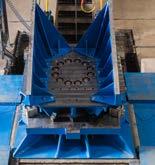
Cover

The earlier you start saving with the Engineers Canada-sponsored Group Savings and Retirement Program’s registered retirement savings plan (RRSP), the more you’ll save.
Ok, we know that’s not exactly rocket (or geo) science – but do you know how much more you can save? It really adds up!
Get the guidance you need
Want some advice? Connect with your personal Canada Life health and wealth consultant online when it’s convenient for you at all steps of your financial journey.
A plan built just for you.
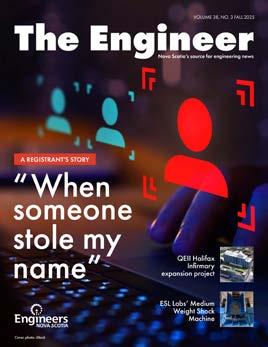
Engineers
Dr. Sue Molloy, P.Eng.
Dr. Jennie Rand, P.Eng.
Dr. Adam Donaldson, FEC, P.Eng.
Cliff Johnston, P.Eng.
Wayne MacDonald, P.Eng.
Malcolm Palamarek, P.Eng.
Krista Phillips, P.Eng.
Kayleigh Rainer Brown, P.Eng.
Ian Squires, P.Eng.
Andrew Thalheimer, P.Eng.
Dilan Watson, P.Eng.
Ex-Officio Members
Crysta Cumming, FEC. P.Eng.
DS (Pal) Mann, P.Eng.
Zone Representatives
Darrin McLean, FEC, P.Eng.
Oliver Browning, FEC, P.Eng.
Vivek Tomar, FEC, P.Eng.
Conrad LeLièvre, FEC, P.Eng.
Ron Marks, FEC, P.Eng.
Andrew Polegato, FEC, P.Eng.
Harry Daemen, FEC, P.Eng.
Committee Chair Persons
Legislative Committees
Denise Trim, FEC, P.Eng.
Bob MacDonald, FEC, P.Eng.
George Goad, FEC, P.Eng.
Dr. Adam Donaldson, FEC, P.Eng.
Committees of Council
Jeff Knapp, FEC, P.Eng.
Andrew Thalheimer, P.Eng.
CEO Committees
John Eisnor, FEC, P.Eng.
Thomas Simmons, EIT
James Beck, P.Eng.
Darrell Marsh, P.Eng.
Browren Allard, P.Eng.
Pending
Chris Feetham, FEC, P.Eng.
Selvana Hagh Gooei, P.Eng.
President Vice-President
Past-President
Councillor
Councillor
Councillor
Councillor
Councillor
Councillor
Councillor
Councillor
Engineers Canada Director CEO & Registrar
Cape Breton/Victoria Colchester
Halifax/Hants
Kings/Annapolis
Pictou
Cumberland
Antigonish/Guysborough
Board of Examiners
Complaints
Discipline Nominating
Finance & Audit
Honours & Awards Committee
Continuing Professional Development
Emerging Professionals
Health & Safety
National Engineering Month
Professional Practice
Student Affairs
Sustainability
Women in Engineering
Engineering: opening doors for Nova Scotia’s communities

Sue Molloy, PhD, P,Eng, President, Engineers
Nova Scotia
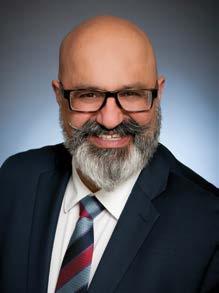
Pal Mann, CD, FCSSE, FEC, P.Eng., ICD.D, CEO & Registrar, Engineers Nova Scotia
Engineering, at its heart, is about more than blueprints, equations, or technical prowess—it is about transforming bold ideas into real, lasting opportunities for people. In Nova Scotia, engineers are the driving force behind community development, serving as both visionaries and problem-solvers who open doors to a brighter, more inclusive future across the province.
Engineering Vision: Transforming Challenges into Opportunities
Almost every major initiative shaping Nova Scotia today begins with an engineer’s unique perspective. Where others might see limitations—geographic remoteness, aging infrastructure, or digital divides—engineers see possibilities. They deploy their expertise to design solutions that balance safety, sustainability, and accessibility, always keeping the well-being of Nova Scotians at the centre.
Take the $7.4 billion QEII Halifax Infirmary Expansion: the largest healthcare investment in Atlantic Canada’s history. Engineers aren’t just delivering a cutting-edge acute care tower with 216 beds, new operating suites, and a vastly expanded emergency department; they are fundamentally changing how healthcare is accessed and delivered, and making Nova Scotia a stronger, safer place to live and work. Such transformations extend beyond Halifax—modernized helipads and upgraded medical facilities across rural communities are closing critical care gaps and strengthening emergency response.
Building Connections: Physical and Digital Infrastructure
Engineers are opening literal and figurative doors across Nova Scotia. With more than $500 million invested recently in roads, bridges, and transportation—from Yarmouth to Cape Breton—engineers ensure people and commerce move safely and efficiently.

Revitalized wharves, newly accessible ferry services, and thoughtful enhancements to iconic destinations like Peggy’s Cove all reflect engineering that values both community culture and progress.
In today’s world, connectivity means more than roads and bridges. The Internet for Nova Scotia Initiative – a project conceived and executed by engineers - has brought high-speed internet to homes and businesses. By leveraging fibre, wireless, and innovative satellite technologies, engineers play a vital role in connecting classrooms, clinics, small businesses, and families.
Expanded cellular networks further ensure that even the most remote communities benefit from vital communication and emergency services.
Leading the Way to Sustainability

Engineers are at the center of Nova Scotia’s clean energy future. Projects like the 625MW Green Choice wind energy initiative and community solar farms—often in partnership with Indigenous groups—not only create jobs and business growth but propel
Photo: iStock
Photo: iStock
the province toward its bold targets for renewable electricity by 2030. Engineers are also guiding the province into emerging frontiers such as hydrogen innovation, helping secure a cleaner, more sustainable tomorrow.
Beyond the Technical: Engineers as Community Builders
At every stage, engineers are collaborators, mentors, and advocates. By working alongside government, communities, and industry, they ensure projects prioritize local values, cultural heritage, and environmental stewardship. Their leadership fosters mentorship for future engineers, inspiring the next generation to see technical skills as a conduit for public service.
Engineers listen carefully to community voices, embedding principles of inclusion, safety, and resilience in every plan and project. Through their guidance, they create possibilities that improve lives and strengthen neighborhoods.
Through vision, expertise, and unwavering commitment to community, engineers across Nova Scotia are opening doors—to opportunity, connection, and a sustainable future. Their work stands as a testament not only to technical achievement, but to the enduring power of engineering to create positive, lasting change for everyone who calls Nova Scotia home.
Remembering Dr. J. Pemberton Cyrus, FEC, P.Eng.

Engineers Nova Scotia Council, staff, and the broader engineering community mourn the passing of Dr. Pemberton Cyrus, FEC, P.Eng.—a distinguished leader, educator, and volunteer whose legacy has left a lasting imprint on the profession in Canada.
Dr. Cyrus dedicated decades of service to Engineers Nova Scotia and Engineers Canada, shaping the profession at both the provincial and national levels. As a long-standing member of the Engineers Nova Scotia Board of Examiners, he reviewed hundreds of licensure applications, ensuring aspiring engineers met the highest standards of professional practice. His leadership on the Honours and Awards Committee reflected his deep commitment to
recognizing excellence within the engineering community.
A recipient of the Engineers Nova Scotia Citizenship Award (2023), the J.D. Fraser Service Award (2019), Engineers Canada Fellowship (2008) and the Zone Award (1997)., Dr. Cyrus was widely recognized for his exceptional service to both the profession and the public. Nationally, he played a pivotal role in advancing engineering education through his work with the Canadian Engineering Accreditation Board, including serving as Chair. His contributions helped shape the accreditation of university engineering programs across the country, reinforcing the quality and integrity of engineering education.
Above all, Dr. Cyrus was a passionate educator and mentor. Through his teaching, he inspired generations of engineering students—instilling in them not only technical knowledge, but also a deep sense of ethics, responsibility, and service. His ability to connect with students and support their growth made him a respected academic and a cherished presence in the classroom.
Dr. Cyrus’s thoughtful leadership, quiet strength, and unwavering dedication to the profession will be deeply missed. His legacy lives on in the engineers he helped shape, the standards he upheld, and the community he so profoundly enriched.
Dr. Cyrus’s obituary can be found here.
Dr. J. Pemberton Cyrus, 1959-2025. His memory will live on.



The Iron Ring at 100

This opinion piece by Dean Mary Wells of Waterloo Engineering and Dean Suzanne Kresta of the University of Prince Edward Island’s Faculty of Sustainable Design Engineering recently appeared in the Globe and Mail.
Nearly a century ago, Canadian engineers conducted the first iron ring ceremony, a way for the profession to symbolize its commitment to the public good following a moment of failure and broken trust.
The ceremony traces its origins to Canadian mining engineer and professor Herbert Haultain, who was deeply affected by the tragic collapse of the Quebec Bridge in 1907, a disaster that claimed 75 lives.
In the early 1920s, Haultain envisioned a future where engineers would uphold the highest standards of integrity, competence and responsibility. He believed this could be achieved through
a formal commitment to ethical principles and professional conduct, leading to the first iron ring ceremony in 1925.
That ceremony is now referred to as the “Calling of an Engineer,” where graduating Canadian engineers receive their own iron ring, a simple band of stainless steel worn on the pinky finger of their dominant hand.
Just as Haultain imagined more than 100 years ago, the ring is not merely an adornment but an ever-present reminder of an engineer’s professional obligations to society. The physical presence of our rings symbolizes the ever-present moral and ethical responsibilities of the engineering profession, taken on as our students emerge into their professional lives.
This ceremony is a tradition that binds our engineering community to the values of integrity, responsibility and trust. These values have never been as important as they are today. This
commitment has not only shaped the identity of Canadian engineers — it has also driven their contributions to Canada’s economic development and prosperity.
Consider the engineering feats that have defined Canada: the Confederation Bridge linking Prince Edward Island across the Northumberland Strait to New Brunswick; the oil-sands technologies balancing resource extraction with environmental stewardship in Alberta and Saskatchewan; and the cutting-edge work in artificial intelligence emerging from hubs like Montreal, Toronto and Kitchener-Waterloo, Ontario.
As we celebrate the last 100 years of Canadian engineering, we must also look forward. The challenges of the 21st century — climate change, digital transformation and global inequality among them — require engineers to act not just as innovators but as stewards of public trust. The iron ring is one example that underscores the ethical obligations engineers in Canada must undertake to safeguard the public and ensure their work benefits society.
A century ago, engineers primarily focused on ensuring the physical safety of the public. Today, as engineering and technology innovations shape nearly every aspect of daily life, their impact extends far beyond physical safety. Engineers must now also consider psychological well-being, environmental sustainability and the broader societal implications of technology.
Today, Canadian engineers are trained to prioritize safety, sustainability and inclusivity. This training extends beyond technical skills to encompass ethical decision-making and societal impact. Whether designing bridges that withstand extreme weather or
Photo: Creative Commons. CC-BY-SA-4.0
algorithms that are fair and transparent, engineers must ensure their creations are trusted by design and, to a larger extent, by the public at large.
Canadian engineers are uniquely positioned to lead in designing and deploying technologies for the public that are equitable, reliable and ethical. Initiatives like the University of Waterloo’s TRuST scholarly network exemplify the commitment to fostering public confidence in technology through collaboration with industry, academia and government, as does UPEI’s forward-thinking Faculty of Sustainable Design Engineering, which centres transdisciplinary education and co-design in its collaborations with community partners and technical staff.
The iron ring ceremony’s centennial offers an opportunity to reflect on how far we have come and to reaffirm our commitment to ethical engineering. It
also provides us with an opportunity to emphasize how the values symbolized by the iron ring – integrity, responsibility and trust — continue to guide Canadian engineers in having a positive effect on their fellow Canadians and the rest of the world.
As we celebrate this milestone, let us honour the legacy of Canadian engineering and inspire the next generation to uphold the principles that have made our profession a cornerstone of Canada’s success. Let us lean on the values that this simple band of metal represents, and share them with all Canadians as we look to tackle the next century of innovation challenges.
The future demands engineers who are not only skilled but also deeply committed to the well-being of society. The iron ring, with its century-old legacy, will continue to remind us of this noble calling.

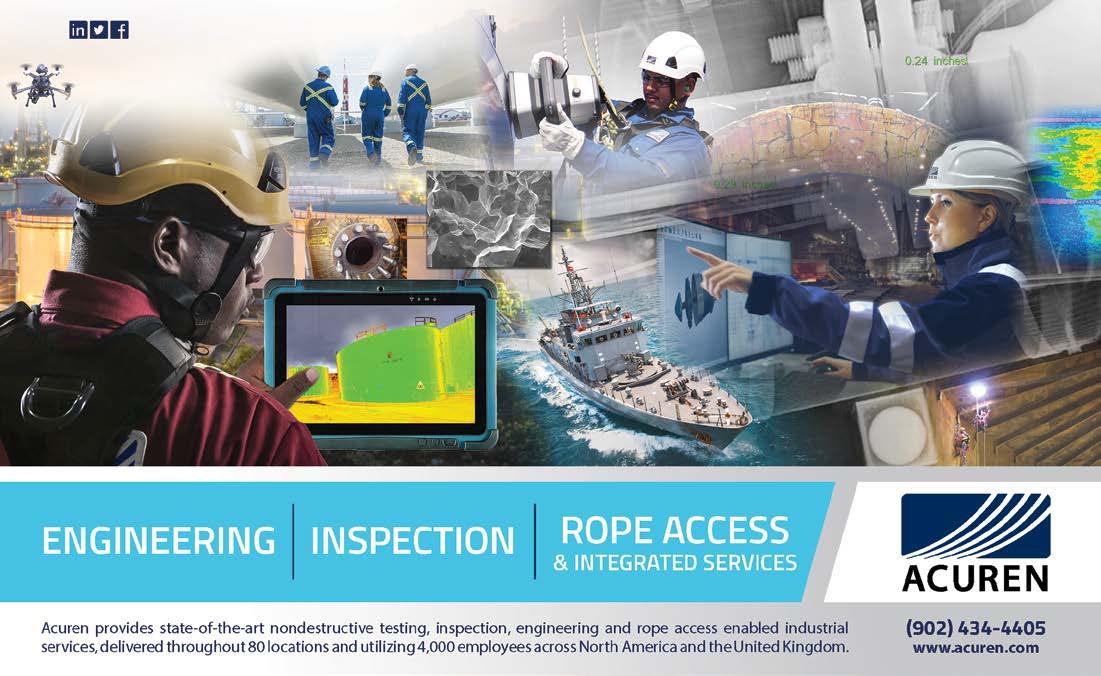



PROFESSIONAL DEVELOPMENT CONFERENCE
October 21 Nova Scotia’s largest annual engineering event
Click here to register
This full-day conference offers a dynamic blend of technical learning, leadership development, and community connection, all focused on advancing excellence in engineering.
With three concurrent learning streams, you’ll have the opportunity to tailor your day to your interests! Whether you’re looking to deepen your expertise, explore emerging trends, or strengthen your professional network.
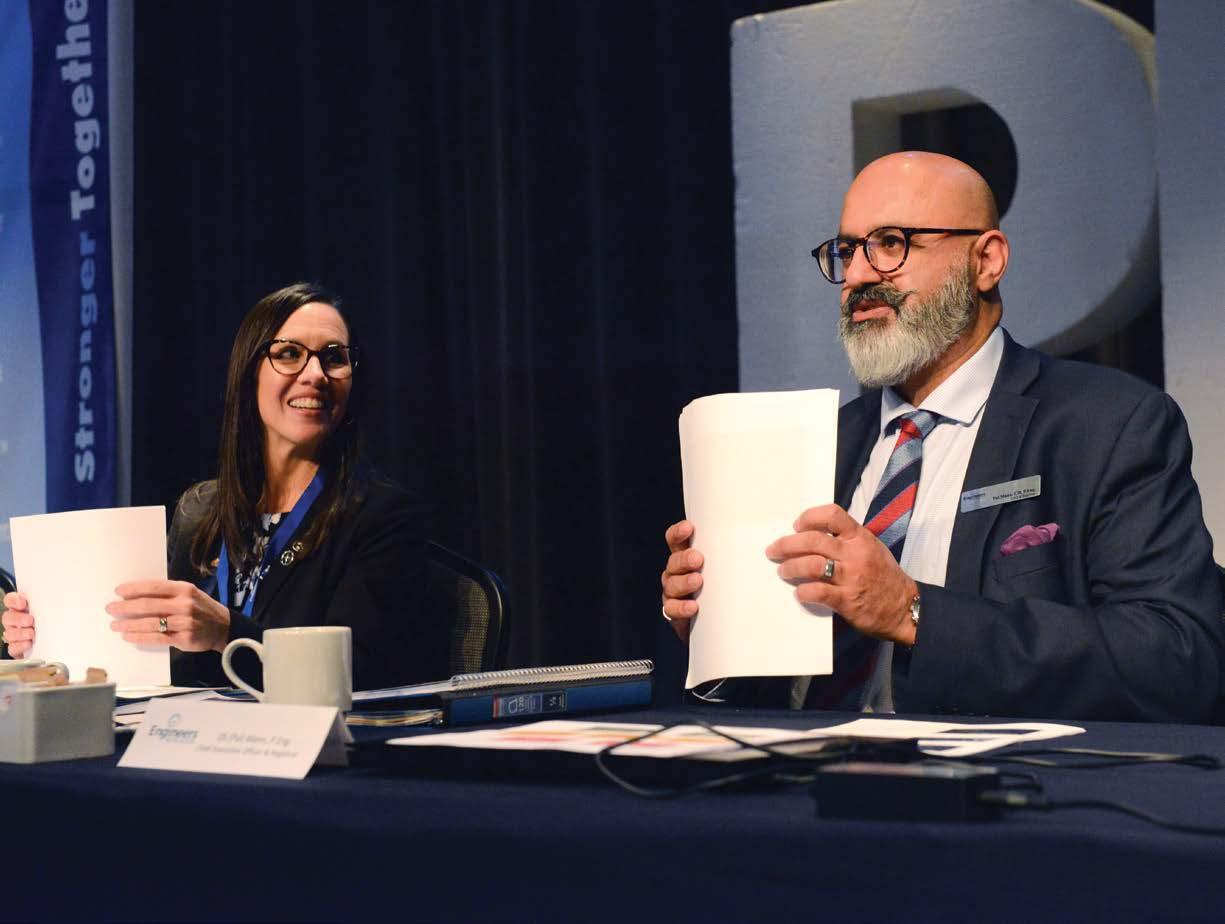
ANNUAL BUSINESS MEETING
October 22 Your chance to have your say
Click here to register
Join us for key updates from the current and incoming Presidents of Engineers Nova Scotia, a review of financials, and the introduction of our new Council. Attendees will have the chance to ask questions and engage directly with leadership. There’s no cost to attend, but registration is required for planning. Participants can claim two PD Hours toward their Professional Development Program.
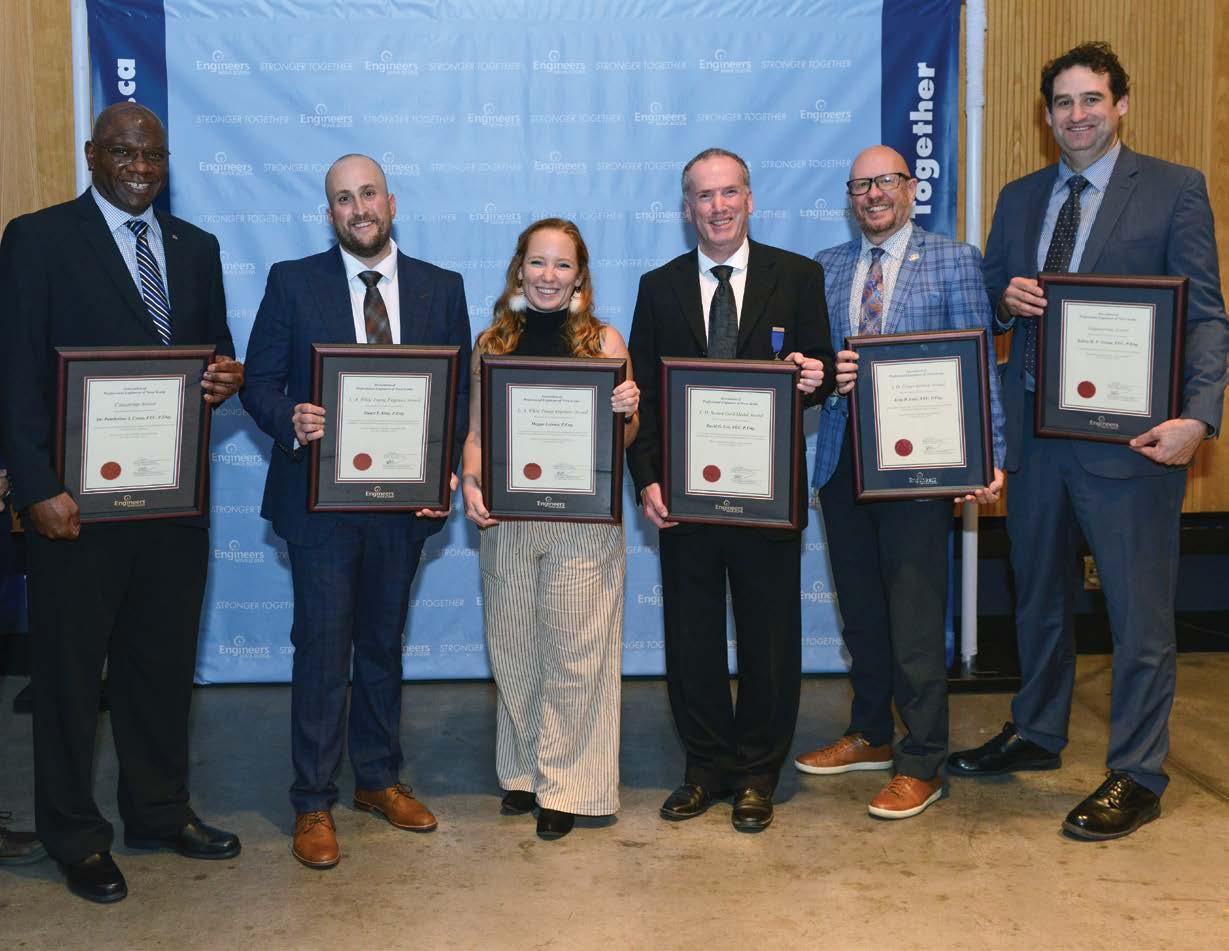
ENGINEERING EXCELLENCE GALA
October 22
Click here to register
Celebrate the leaders and innovators shaping our profession. We’ll honour Past Presidents for their service and recognize this year’s award winners for their outstanding contributions to engineering in Nova Scotia.
This will be a memorable evening of reflection, recognition, and connection. We look forward to celebrating with you as we honour the individuals and projects that continue to advance the engineering profession.



Faces of service: Robert (Bob) MacDonald, FEC, P.Eng.
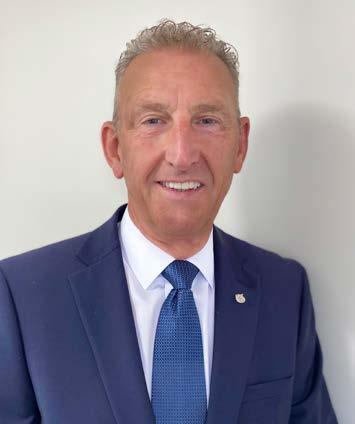
Robert (Bob) MacDonald, FEC, P.Eng. Engineers Nova Scotia, Past President (2016)
Volunteering is a profound expression of commitment and service, and few exemplify this better than Robert (Bob) MacDonald, P.Eng., FEC. Currently chairing the Complaints Committee, Bob has long demonstrated his dedication to the engineering profession—having served as President of Engineers Nova Scotia (2015–16) and the Mining Society of Nova Scotia (2008). His contributions have been recognized with the Engineers Nova Scotia J.D. Fraser Service Award and his designation as a Fellow of Engineers Canada.
Under his leadership, the Complaints Committee has taken on an increasingly demanding workload, with a rise in both the volume and complexity of cases. Each matter requires careful, thoughtful review by committee members to ensure the most appropriate course of action is taken—reflecting the integrity and diligence that define Bob’s volunteer legacy.
What has serving on the Complaints Committee taught you?
Serving on the Complaints Committee has introduced me to several fellow engineers who are volunteering their time as I am. But more importantly, I am overly impressed with the character and competence of everyone. They all give 100 percent plus and are truly engaged in ensuring that the committee scrutinizes each case and form no preconceptions or ill faith judgement of the complainant or party being complained against. It is a pleasure to chair such a dedicated group of open-minded individuals.
How has engineering in Nova Scotia changed since you were President ten years ago?
When I was president ten years ago, we were advocating for more outreach in the community and with the membership. We were committed to engaging with the school grade students to promote STEM and consideration of engineering as a career. We felt that there needed to be more diversity within the profession and a stronger cohort of females, so we strongly promoted the 30 by 2030 Women in Engineering initiative. Also, staff began engaging more with the members through representation at zone meetings and presentations on various aspects of our profession. I look at our association today and I believe the decision for stronger outreach has created a more diversified membership with continued growth in the female population. Also, with the
hiring of new staff over the past number of years I see significant efforts being made to modernize our association and to strengthen our regulatory framework.
What does volunteering mean to you?
It provides a lifelong learning experience about other organizations and opens your mind to how and why other people do what they do to support and advance an initiative or program within the community or profession. For a young professional starting a new career volunteering can also provide an opportunity to network and possibly find the path they were looking for to succeed in their career.
“Volunteering offers a person the opportunity to engage with their community and form
everlasting relationships with like-minded individuals.
”
- Robert (Bob) MacDonald, FEC, P.Eng.
What advice would you give to someone just starting out in their engineering career?
The world is your oyster, and the degree is like a grain of sand placed within the oyster that is waiting for you to create this pearl - your successful career. Part of that success will feel better when you volunteer for your community, our profession or a cause that is important to you.”
An engineer’s journey
Sergio A. Sanabria Restrepo, P.Eng.

Commissioning of a solar off-grid system providing backup power for office facilities at a coal mine in Cundinamarca, Colombia
Sergio A. Sanabria Restrepo, P.Eng., is a Renewable Energy & Telecom Engineer, originally from Bogota, Colombia. He is highly skilled at leading energy efficiency and technological upgrade projects for diverse industries, including coal mines, farms, and production factories, delivering significant energy savings and reducing carbon footprints.
He was looking for a better future for his son and the opportunity to explore life in a different country. After being offered a job by a solar energy contractor, based in Nova Scotia’s Annapolis Valley, he moved with this family to Canada in 2019. The opportunity was made possible through the Atlantic Immigration Program (AIP). The program helps employers hire skilled foreign workers and international graduates from a Canadian institution for a position they haven’t been able to fill locally.
Before arriving, he reached out to the Immigrant Services Association
of Nova Scotia (ISANS) for support. They helped him develop a settlement plan and aided upon his arrival to help facilitate a smooth transition and successful integration into life in Nova Scotia. His advice to others considering a global move is, “to prepare as much as possible in the language spoken in that place, and research development and pre-arrival settlement opportunities.”
In 2021, Restrepo began working as a Project Manager for Nova Scotia Power’s Smart Grid pilot project and was recently promoted to Senior Engineer. Sergio works with emergency clean energy and energy storage technologies that are helping shape the province’s energy future.
He said, “It’s exciting to see the transition towards cleaner energy and more sustainable living - one that’s greener, more reliable, and resilient to climate change.”
Nova Scotia Power’s Smart Grid program provided evidence and lessons
on how Nova Scotia Power’s solar and battery pilot programs can effectively use more renewable energy and benefit residential, commercial, and industrial customers with more stable and reliable energy. He says, “batteries help fill in the gaps when the wind isn’t blowing, or the sun isn’t shining.”
Currently, Sergio is leading the deployment of 30 EV fast charging stations across 15 locations in rural Nova Scotia, as part of a joint effort between the government and the private sector to expand the electric vehicle network in the province.
“I love helping customers learn about these technologies—together we’re making a difference.”
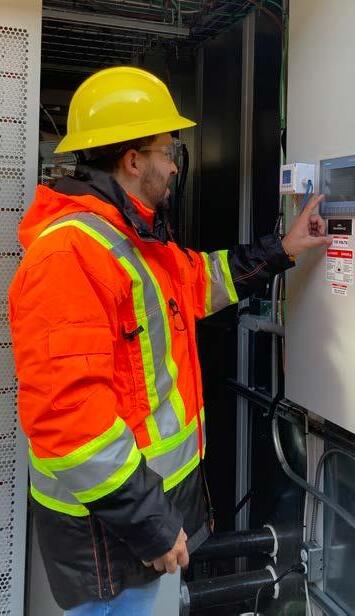
Commissioning of a battery system in Bedford

Site-wide aerial shot. Photo credit: Courtesy of QEII Foundation
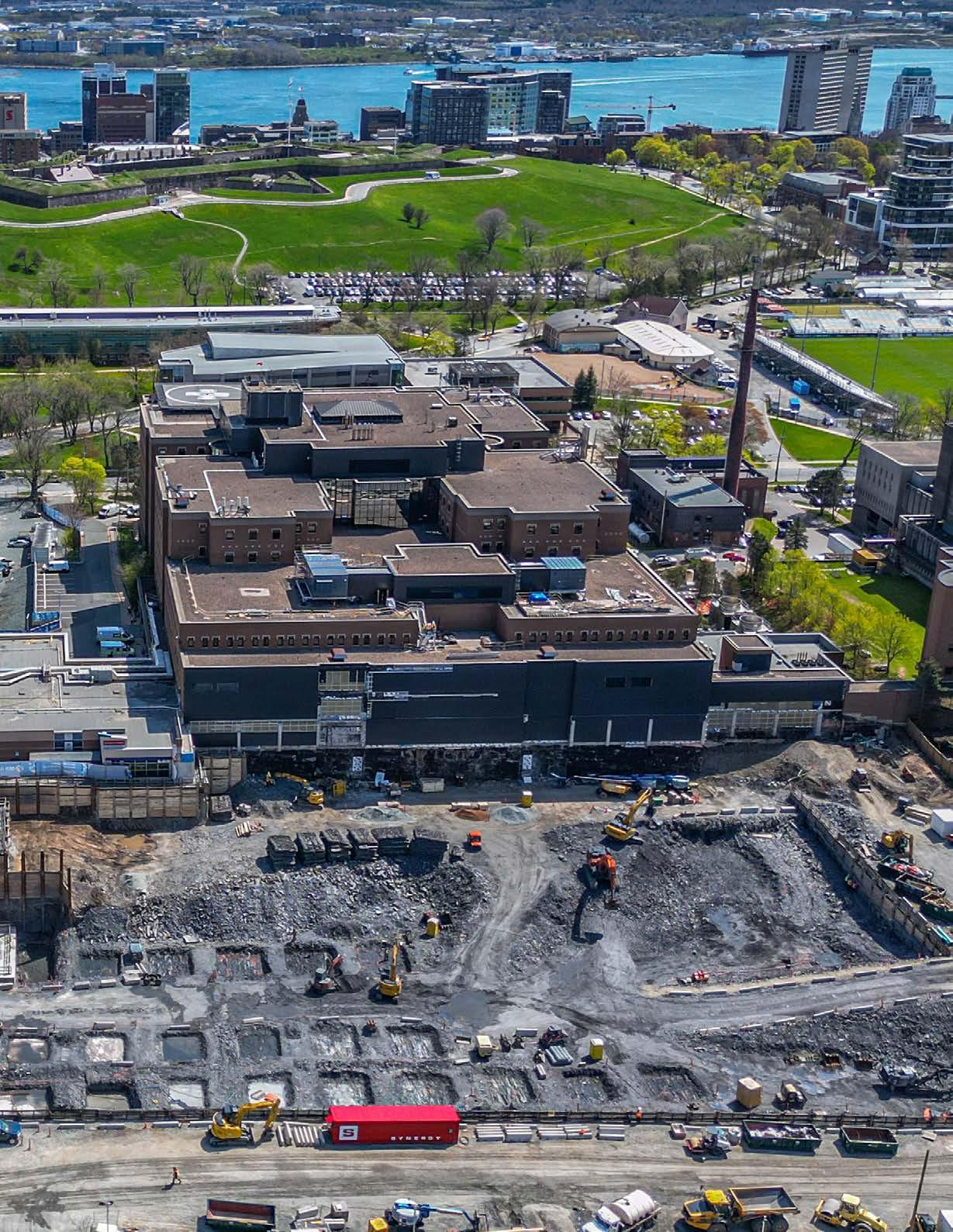
The people powering Atlantic Canada’s largest healthcare infrastructure project

Engineers are at the forefront of one of the most demanding infrastructure undertakings ever attempted in Nova Scotia – a project that must reconcile clinical precision, urban constraints, and long-term adaptability from day one.
“The QEII Halifax Infirmary Expansion Project is more than a construction site – it’s an opportunity to reinvest in Nova Scotia and Nova Scotians, especially healthcare and skilled trades.” says David Benoit, P.Eng., President and Chief Executive Officer of Build Nova Scotia.
As the largest healthcare infrastructure project ever undertaken in Atlantic Canada, the Halifax Infirmary Expansion is a feat of both design and logistics. Part of the Action for Health Build, it includes a new 14-storey acute care tower, new, larger emergency and operating departments, new intensive care units, inpatient beds, diagnostic imaging suites, and more. But none of it happens without engineers – civil, structural, mechanical, electrical, geotechnical, and systems engineers – working behind the scenes to turn vision into reality.
“Engineering is the foundation of everything we do,” says Andrew Feener, P.Eng., Build Nova Scotia’s Senior Director, Project Delivery & Chief Project Officer for the Halifax Infirmary Expansion Project. “From energy systems to structural design, infection control to clinical equipment, engineers are embedded in every decision.”
For a project of this scale, engineering is as much about systems thinking as it is about technical specifications. Engineers are helping ensure the new facility is climate-resilient, digitally integrated, and designed to support modern
Ten women helping to shape the Halifax Infirmary Expansion Project – bringing expertise, leadership, and fresh perspectives to Atlantic Canada’s largest healthcare infrastructure build.
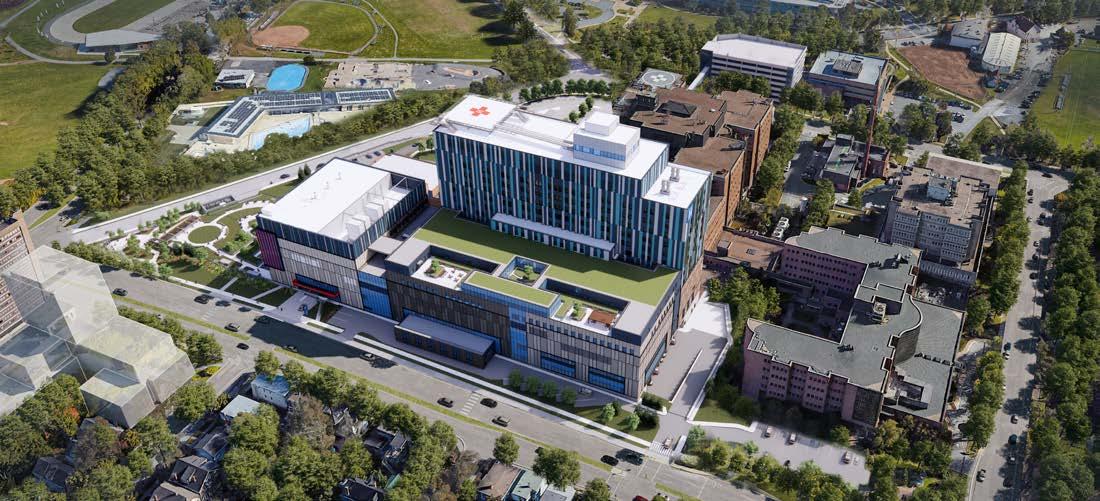

models of care – all while maintaining hospital operations on a busy urban site.
Take the building’s energy systems, for example. The expansion includes high-efficiency heating and cooling systems, advanced ventilation, and hospital-grade filtration designed to meet the most stringent health standards while reducing environmental impact. Build Nova Scotia employs more than 25 engineers or engineers in training, who are designing systems that not only support patient and staff well-being, but also meet Nova Scotia’s climate goals and national energy codes.
Structural engineers are also playing a critical role, ensuring the new tower can withstand both the demands of a modern hospital and future adaptability. “We’re designing for today and tomorrow,” explains Feener. “Hospitals are evolving constantly – our engineering teams are building flexibility into the foundation, literally.”
In many ways, the Halifax Infirmary Expansion is redefining what healthcare buildings can be – and that means pushing engineering boundaries, too. Engineers are working closely with
project architects, clinicians, infection prevention specialists, and IT experts to design spaces that are safe and functional, as well as healing and human-centered.
Collaboration is key. The project involves engineers from Build Nova Scotia, Nova Scotia Health, and private-sector partners, Plenary Americas and PCL Construction. Many are Nova Scotians themselves –professionals who are not only proud to help deliver a landmark project, but who may one day rely on the very systems they helped create.
“This isn’t just about designing a building,” says Feener. “It’s about building trust in our public infrastructure, supporting the next generation of healthcare workers, and creating a space where Nova Scotians receive the care they need.”
As cranes rise and foundations take shape, the contribution of engineers is often hidden beneath concrete and steel. But their impact will be felt for decades to come – every time someone walks through the doors of a safer, smarter, more sustainable hospital.
The new acute care tower will be substantially complete in Fall 2030 and open to patients in Fall 2031.
Photo of Andrew Feener, P.Eng. (Build Nova Scotia)
ESL Labs’ Medium Weight Shock Machine tests the limits
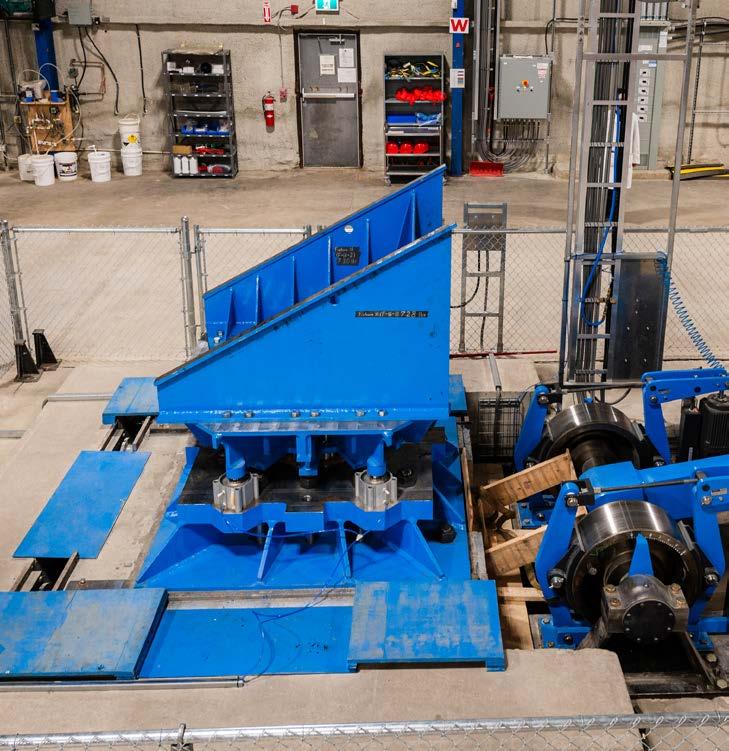
When the Canadian government awarded Nova Scotia’s Irving Shipbuilding the 2011 contract to build the combat package, the largest portion of work under the National Shipbuilding Strategy (NSS), the procurement promised to not just end the boom-and-bust cycle of shipbuilding jobs but also usher in new Canadian development - and the engineering, manufacturing and hi-tech jobs that come with it - for Canadian suppliers, from electronics to propulsion systems, requiring domestic design, manufacturing and test engineering expertise.
Irving Shipbuilding’s supply chain now stretches from coast-to-coast, and the National Shipbuilding Strategy supporting around 9,400 jobs annually across Canada, with 4,300 of those 9,400 jobs located in Nova Scotia.
With the work nearing completion for the six Arctic and offshore patrol ships, and plans turning toward the River-class destroyer series, ESL Labs, a Dartmouth, Nova Scotia test facility, has invested $10M in upgrades, including installation of a Medium Weight Shock Machine (MWSM), one of only two in Canada, and just 18 in the
world, for testing the ability of equipment and system installations onboard to withstand the effects of nuclear or conventional weapons.
“The navy needs to ensure that shipboard equipment can survive the severe shock loadings that could be experienced during combat conditions, for example due to the impact of nuclear or conventional weapons, “ explains Steve Mercer, P.Eng., ESL Labs General Manager.
“The shock that’s generated on that machine emulates the impact that equipment receives inside the vessel (under attack). We want to make sure the equipment remains operational and doesn’t become a hazard.”
The fifteen River-class destroyers (the first three are named ‘Fraser, ‘ ‘SaintLaurent, ‘ and ‘Mackenzie’) will replace both the retired Iroquois-class destroyers and patrol frigates. They will ensure that Canada can continue to monitor and defend its waters and contribute to international naval operations.
Shock testing is essential. Critical naval ships and submarine equipment for combat and survival must continue to function after explosions. Shock tests ensure the equipment’s mounting is secure and that equipment does not become hazardous after an underwater blast.
Shock tests simulate non-contact underwater explosions in combat situations and apply to all critical equipment installed on Royal Canadian naval ships expected to be in harm’s way.
The MWSM is used to simulate underwater explosions and the impact on continued operation of both critical
The Medium Weight Shock Machine, installed at ESL labs.
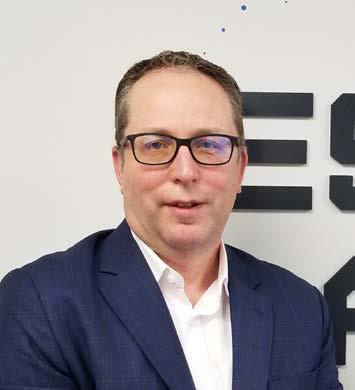
Steve Mercer, P.Eng., ESL Labs General Manager
systems and equipment. “Different shock loads are generated on equipment in different mounting orientations to ensure the equipment remains operational and functioning at optimal capacity,” says Mercer.
Many engineering challenges were overcome in the installation of the MWSM in the 30,000 sq. ft. Dartmouth facility. It was a complicated assembly - with the last MWSM built in the United States in 1993. ESL Labs points out that the MWSM drawing package dates to 1961. Materials and construction methods have changed greatly since 1961, so a substantial amount of re-engineering was required.
The greatest challenge was with the concrete assembly. The MWSM counter weight is 34,300 kg of concrete and steel embeds. sitting on eight springs. The assembly sits on eight springs within the outer foundation of 157,200 kg of concrete and steel embeds. Due to building constraints, the counterweight needed to be cast in place. This required the concrete to be cast and the assembly grouted with the springs in compression, with the springs being released once the
“Our comprehensive Canadian manufacturing and testing capabilities, which underpin the entire Canadian supply chain, directly supports the emphasis on national sovereignty”
“Shock testing does more than just ensure combat readiness and protect personnel; it also delivers significant long-term cost savings. By providing valuable feedback to manufacturers, testing helps reduce future repairs and downtime, avoid expensive retrofits, and ultimately extend the lifespan of equipment. “
concrete had cured. “Our task involved a double challenge: managing immense material weight while also adhering to critical time limits.”
With support of a subject matter expert - a mechanical engineer from the US with more than 35 years of experience in shock testing - the MWSM was 100% re-engineered, fabricated and assembled in Nova Scotia. The project
required significant mechanical, civil & electrical engineering design and construction support:
• Stantec Engineering (Dartmouth) completed the drawing package, including the foundation, piece parts, assembly and controls.;
• Castone Construction (Dartmouth) undertook the concrete assembly; MacGregors Industrial Group (Thorburn) took care of the manufacturing of components and assembling of the mechanical and electrical components; and
• Harbourside Project Management oversaw the overall Project Management.
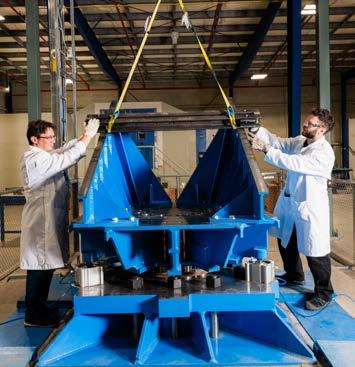
The National Shipbuilding Strategy ensuring public money stayed in Canada has meant jobs growth across Nova Scotia. “The expansion of our military testing, particularly for naval applications, is occurring at a critical time. ESL Labs takes great pride in our role of delivering mission-critical systems and equipment.” As the NSS continues, ESL Labs expects to more than double its workforce in the next 3-5 years.
Intercultural competence in the workplace: Communicating with cultural intelligence
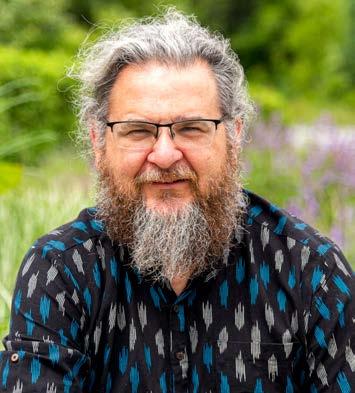
Paul Pickering | Coordinator, Intercultural Workplace Program, Immigrant Services Association of Nova Scotia (ISANS)
In today’s increasingly diverse workplaces, effective communication across cultures is not just a soft skill—it’s a strategic advantage. This was the central theme of a recent webinar led by Paul Pickering, a seasoned intercultural educator, immigrant advocate, and US native who has spent decades living and working across South Korea, Czechia, Estonia, England, and Canada.
Drawing on his background in Cultural Anthropology and Communication Studies, Pickering explored the nuances of high- and low-context communication styles. High-context communication, prevalent in cultures like Japan and Saudi Arabia, relies heavily on shared experiences, nonverbal cues, and implicit understanding. In contrast, low-context communication—common in Canada
and the U.S.—emphasizes clarity, directness, and explicit messaging. “Neither style is better,” Pickering emphasized. “Although there is a Canadian cultural tendency, being able to understand and adapt to different approaches creates resilience and flexibility in the workplace.”
This insight is particularly relevant in Nova Scotia, where workplaces are becoming more culturally diverse—not just in terms of ethnicity, but also age, education, and cognitive styles. Pickering, who has been developing and delivering the Intercultural Workplace Program for ISANS since 2013, encourages employers to embrace this diversity as a source of innovation. “Diversity of thought really is innovation,” he noted, linking inclusion directly to creativity and progress.
One of the webinar’s standout messages was the shift from the “golden rule” to the “platinum rule”: treat others how they wish to be treated. This subtle but powerful change in mindset fosters empathy and respect, especially in multicultural teams. Pickering also addressed the unique challenges immigrants face, such as licensing barriers and cultural misunderstandings. He advocated for mentorship and inclusive management practices to support smoother integration.
“Culture is the lens we see the world through—and it’s changing all the time,” Pickering said, urging participants to reflect on their own cultural assumptions. He reminded attendees that culture is not static. “We’re not
passive in culture—we’re active, even if we don’t realize we are.” This dynamic view of culture encourages individuals to take responsibility for shaping inclusive environments.
The session concluded with practical strategies for bridging communication gaps, such as tailoring environments to suit different task types and encouraging ongoing dialogue. Participants were invited to continue the conversation and explore further training opportunities through ISANS, Atlantic Canada’s leading immigrant settlement agency. With over 45 years of experience, ISANS supports more than 17,500 newcomers annually, helping them build futures in communities across Nova Scotia.
“Every single culture in the world is internally, logically consistent,” Pickering reminded the audience, encouraging curiosity and respect when navigating cultural differences. His anthropological lens offers a refreshing perspective: that understanding others begins with recognizing the validity of their worldview.
In a world where collaboration across borders is the norm, intercultural competence is no longer optional. It’s essential. And thanks to organizations like ISANS, Nova Scotian workplaces are better equipped to thrive in this global landscape.
Register for ISANS’ Fall Intercultural Workplace Program here.
Watch on
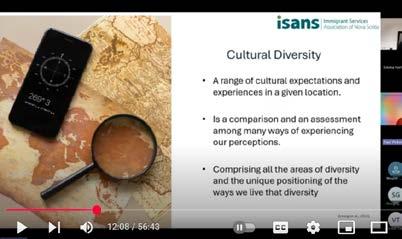
PD Webinar: Understanding High and Low Context Exchanges in the Workplace
ISANS’ 5 tips to
improve interviewing job candidates
1. Ensure the person you are interviewing is clear about the directions, time, and any unusual aspects to getting into the location of the in-person interview, or IT considerations for virtual interviews. For in-person: parking, public transportation, cycling, weather, traffic conditions at certain times of day, names and numbers of buildings, streets and many other things may lead to delays. For virtual interviews, a trial connection is wise.
2. Clear communications about the interview itself will support success.
a. This can be about the structure of the interview, the approach of the questions, expectations about punctuality, the types of responses the candidate can expect.
b. There may be cultural differences at the event, such as with non-verbal communication and Canadian cultural expectations, the importance of small talk, and length of eye contact. For in-person interviews, it may be worth mentioning the presence of a greeting (often a handshake), direct eye contact, generally at least two feet between people, and no strong perfumes or colognes (to recognize a scent free policy, for example).
3. Providing interview questions prior, can lessen anxiety and provide a more level playing field for applicants.
4. The interviewers may share something personal about themselves or ask about part of the applicant’s background where they seem to have a commonality. Trust is important, and we can develop it in a variety of ways. Convey calmness, authenticity, and respect.
5. Use “Plain English” without jargon, abbreviations, metaphors, or acronyms. Ask one question at a time, be aware of direct and indirect communication preferences, consider biases about eye contact, or accents and dialects, and allow for moments of silence, especially if English is a non-native language.
When someone stole my name: The hidden cost of engineering fraud

I never imagined I’d see my stamp on engineering documents I didn’t authorize, but that’s exactly what happened. They signed off on design drawings, submitted reports to building officials, and offered services under the illusion of my expertise. At first, I thought it was a mistake — a clerical error; maybe a misfiled document, but as the evidence mounted, the truth became undeniable — this was fraud. Someone had impersonated me, and worse, they had used my professional identity to deceive clients and regulators.
My name and reputation, something I had spent years building into a symbol of trust and competence, were compromised, and I was forced to regain the trust of my clients. I was worried, people may look at my stamp with skepticism in the future and wonder if there was any reason to doubt its validity.
Engineering is a profession built on trust. When someone violates that trust by forging a stamp or impersonating a licensed professional, they don’t just commit fraud; they endanger lives. They undermine the entire system. And they leave real engineers, like me, to pick up
the pieces. When I realized what was happening, I was shocked. I felt violated that somebody would use my name and hard-earned credentials to commit fraud.
I immediately notified Engineers Nova Scotia to bring this issue to their attention, and to help guide me through the process to determine how this happened and to protect me and my business. I was very impressed with Kris Dove, FEC, MBA, P.Eng., COO and Treasurer of Engineers Nova Scotia, who jumped in immediately and intensely understood the urgency of my situation. Their support and swift action gave me a feeling of reassurance I really needed. I was relieved I was going to have help to get through this and not be left to investigate this alone. They did all the legwork. I greatly appreciate their work and support.
We need to build awareness for people hiring engineers to ensure the validity of the engineer they are hiring, and to spot red flags that could be a sign of potential fraud, because behind every fraudulent stamp is a real person whose life might be impacted. And I
was one of those people. I’m speaking out because I want to warn others. This can happen to anyone — even you, by someone anywhere in the world.
Engineering Fraud Awareness Campaign Launched
With an increasing number of unlicensed individuals offering engineering services—especially through freelance platforms, provincial engineering regulators from the Maritime provinces have launched a Fraud Awareness campaign to raise public awareness about the risks of hiring unlicensed individuals posing as engineers.

From homeowners who need an engineer’s expertise for complex electrical or drainage issues to homebuilders concerned about coastal erosion—this campaign empowers the public and industry professionals to verify an engineer’s credentials before they hire.
If someone suspects that they have been dealing with someone who is not a professional engineer, they can confirm if the person is registered with their provincial engineering regulator by checking the Member and Company Directory in that province.
We need to reinforce the importance of verifying licensure before engaging engineering services. Trying to get a cheap engineering stamp on a freelance platform greatly increases your chances of hiring a fraud. Someone performing professional engineering work must be licensed to practice professional engineering. And we can tell you who is and who is not licensed to do this work.

Photo: iStock

















Saeed Aldweik, P.Eng.
Discipline: Electrical Engineering University: Memorial University
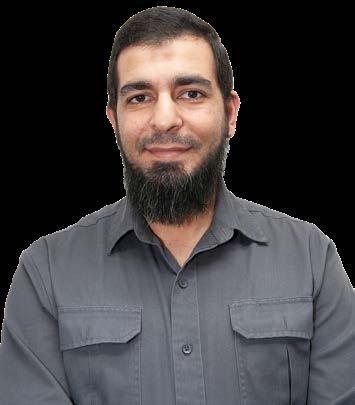
What inspired you to pursue a career in engineering?
From a young age, I was intrigued by how things function and loved tackling challenges. Engineering naturally appealed to me because it blends creativity, analytical thinking, and practical problem-solving.
What are your long-term career goals?
In the long term, I aspire to contribute to sustainable energy solutions by developing innovative methods to harvest energy from underutilized sources. My goal is to be part of a team that advances energy efficiency and supports a more sustainable future.
Cameron Batcules, P.Eng.
Discipline: Chemical Engineering University: Dalhousie University

What inspired you to pursue a career in engineering?
My grandfather and uncle were engineers, and I’ve always gravitated towards the maths and sciences so engineering seemed like a career path to pursue.
What are your long-term career goals?
My goal is to continue to develop my problem-solving and leadership skills to make it easier to manage challenging projects that can make a real difference to those I work with and the community as a whole.
Eunice Charles, P.Eng.
Discipline: Systems Engineering University: University of Greenwich

What inspired you to pursue a career in engineering?
Passion for problem-solving - I am a natural problem solver. I have a great desire to find creative and practical solutions to real-world problems.
Influence and responsibility - I am keen to play a key role in shaping the future. with the ability to influence society through technology and innovation.
What are your long-term career goals?
Drive innovation by leading the development of cutting-edge system architectures. Share knowledge by mentoring young engineers and leading training programs. Focus on resilient and eco-friendly systems by adopting principles of green engineering, system thinking and circular design.
Aya Ghalib, P.Eng.
Discipline: Mechanical Engineering University: Dalhousie University

What inspired you to pursue a career in engineering?
I grew up in a family that valued helping others, and I have always found purpose in solving problems. Inspired by my dad’s work as a civil engineer, I pursued mechanical engineering to apply design and technical skills in ways that make a lasting, positive impact.
What are your long-term career goals?
My long-term goal is to build a career that creates meaningful impact through innovative design and effective project management. As a mechanical engineer, I am driven to keep learning, explore new areas within the field, and grow both technically and as a leader to deliver sustainable, real-world solutions.
Cyerra Gibson, P.Eng.
Discipline: Civil Engineering University: Dalhousie University LinkedIn

What inspired you to pursue a career in engineering?
I was inspired by my dad, a fellow civil engineer, who often emphasized that engineering teaches you how to learn and will open doors to any career path. As I progressed, I grew to appreciate how engineering applies to everyday life and in the construction industry, it’s rewarding to see how building projects can visibly transform and strengthen communities.
What are your long-term career goals?
My long-term goal is to advance the adoption of technology within the architecture, engineering, and construction industry—both in Canada and eventually in my home country, The Bahamas. I’ve also always had a passion for teaching as a STEM tutor, and hope to become a tertiary-level educator once I’ve gained further industry experience.
Farzaneh Hamedi Azad, P.Eng.
Discipline
: Civil Engineering University: Tehran University, Dalhousie University

What inspired you to pursue a career in engineering?
My enthusiasm for art found expression in mathematics, my curiosity about motion and stars in physics, and my love for problem-solving naturally led me to engineering—where all these interests come together..
What are your long-term career goals?
• Become a technical leader on major infrastructure projects
• Pursue a senior role in project management
• Specialize in soil/rock-structure interaction design
John Hauser, P.Eng.
Discipline: Systems Engineering University: Dalhousie University LinkedIn

What inspired you to pursue a career in engineering?
The desire to solve practical problems, while in an engaging and challenging field.
What are your long-term career goals?
To continue encouraging the development of industrial automation within the Maritimes.
Ruth Kodaliparambil Joji, P.Eng.
Discipline: Chemical, Biotech, Environmental University: Sahrdaya College of Engineering and Technology
What inspired you to pursue a career in engineering?

My passion for chemical, biotechnology, and environmental engineering stems from a desire to develop sustainable solutions that improve health and protect the environment. I’m motivated to apply interdisciplinary science to innovate processes that enhance quality, safety, and environmental stewardship.
What are your long-term career goals?
My long-term goal is to lead multidisciplinary teams in developing innovative, sustainable engineering solutions that enhance public health, ensure regulatory compliance, and drive continuous improvement in quality and environmental performance.
Mohsen Marani, P.Eng.
Discipline: Mechanical Engineering University: École de technologie supérieure
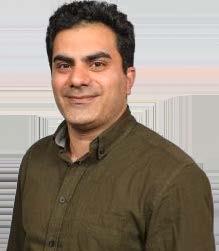
What inspired you to pursue a career in engineering?
I have always been driven by curiosity and a desire to solve real-world problems. Engineering inspired me because it combines innovation, practical impact, and continuous learning. It allows me to contribute to meaningful advancements in technology and industry.
What are your long-term career goals?
In the long term, I aspire to contribute to transformative engineering projects that address global challenges such as sustainability, advanced manufacturing, and clean technologies. I also aim to stay actively involved in professional organizations to help shape the future of the engineering profession.
Oscar Moyles, P.Eng.
Discipline: Civil Engineering University: Dalhousie University LinkedIn

What inspired you to pursue a career in engineering?
The workings of the material world, which engineering often has to grapple with, is mysterious, complicated, and unforgiving. I was initially driven by my curiosity towards this. I remained in the profession for the connections I have made, for the vibrant professional community, and for the great fortune of seeing the real-world outcomes of my work.
What are your long-term career goals?
I look forward to doing work that benefits society and has lasting impacts, to advancing science and the engineering knowledge base, and to growing my personal and professional connections.
Nada Nasr, P.Eng.
Discipline: Mechanical Engineering University: Memorial University

What inspired you to pursue a career in engineering?
As a teenager, I was obsessed with the show Mayday, fascinated by how mechanical failures could lead to major consequences and how engineers worked to prevent them. That curiosity grew into a passion for understanding how machines work. Mechanical engineering felt like the perfect way to turn that interest into a meaningful career.
What are your long-term career goals?
I hope to return to working on industrial sites and grow into a role focused on technical design. My goal is to apply hands-on experience to develop practical, efficient engineering solutions in complex operational environments.
Paul Okojere, P.Eng.
Discipline: Mechanical Engineering University: University Of Benin

What inspired you to pursue a career in engineering?
From a young age, I was fascinated by how things work—curious about the mechanics behind everyday tools, machines, systems and yes, I did spoil a few things along the way. That curiosity, combined with a passion for problem-solving and making a tangible impact, naturally led me to engineering.
What are your long-term career goals?
To become a recognized leader in sustainable engineering solutions, contributing to innovative projects while mentoring the next generation of engineers.
Patrick Oldfield, P.Eng.
Discipline: Electrical Engineering University: Dalhousie University

What inspired you to pursue a career in engineering?
I chose to pursue a career in engineering to challenge myself to think in new ways, learn to approach problems creatively, and continuously develop new skills.
What are your long-term career goals?
My long-term career goal is to make a lasting, positive impact in my work. I’m committed to staying curious, adaptable, and engaged with my community, and will work to inspire others to do the same.
Corey Sawyer, P.Eng.
Discipline: Mechanical Engineering University: Dalhousie University
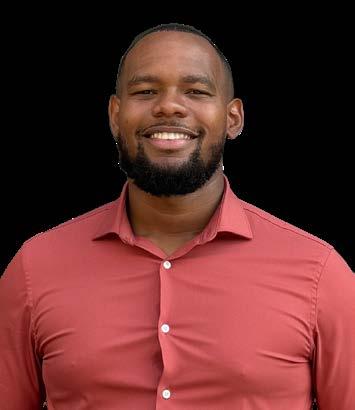
What inspired you to pursue a career in engineering?
I’ve always had a penchant for learning how things work, and I experimented with different ways of satisfying this curiosity during my childhood. In high school, I discovered my passion for engaging the technical aspects of systems. This passion, coupled with an ongoing desire to teach/discuss science, spurred me to pursue a career in engineering.
What are your long-term career goals?
I want to have a positive, lasting impact on the implementation of efficient technologies, designs, and overall processes in the construction industry and beyond. I also aspire to take advantage of the expertise I develop throughout my career to help shape and promote STEM education, especially in the Caribbean.
Nathaniel Schrader, P.Eng.
Discipline: Chemical Engineering University: Dalhousie University

What inspired you to pursue a career in engineering?
I am motivated by opportunities to use technical skills to address real-world problems and make a meaningful difference. My enthusiasm for problem-solving and ambitions to make an impact inspired me to pursue engineering. My developing interests in thermodynamics and optimization further encouraged my specialization in chemical engineering..
What are your long-term career goals?
I am driven by creativity and innovation, with a focus on energy efficiency for more than a means to operational savings, but to drive a more comfortable built environment for occupants. My career aspirations are to deliver innovative engineering solutions and to push new boundaries within our healthcare facilities management and operations teams.
Hardik Suthar, P.Eng.
Discipline: Civil Engineering University: Gujarat Technological University

What inspired you to pursue a career in engineering?
I pursued engineering to help create sustainable solutions that reduce environmental impact. My goal is to design eco-friendly buildings using natural resources and recycled materials for a better future.
What are your long-term career goals?
My long-term goal is to lead sustainable development projects that set new benchmarks in energy efficiency and environmental responsibility. I aim to drive innovation, influence green building practices, and help shape a more resilient future.
Rashad Swain, P.Eng.
Discipline: Civil Engineering University: Dalhousie University LinkedIn
What inspired you to pursue a career in engineering?

My uncle Burke, who raised me after my mother passed away, inspired me to pursue engineering. He saw my strengths in science and math and, with his own background in Construction Engineering Technology, helped me discover a passion for problem-solving.
What are your long-term career goals?
My long-term career goal is to become a leader in transforming the construction industry by integrating artificial intelligence to drive innovation, improve efficiency, and solve complex challenges at scale. I also hope to inspire and mentor younger people in my community to pursue careers in engineering and technology.
Safety
isn’t just a priority—it’s a necessity.
Learn from Dalhousie University safety experts— self-paced online courses now available!
Laboratory Safety – Work smart in research settings����
WHMIS 2015 – Handle hazardous materials safely
Biosafety – Safe practices for biohazardous work ...and many more!
Engineers Nova Scotia introduces new P.Eng. to the engineering community, with a portrait and a brief write-up of the engineer’s future goals.






